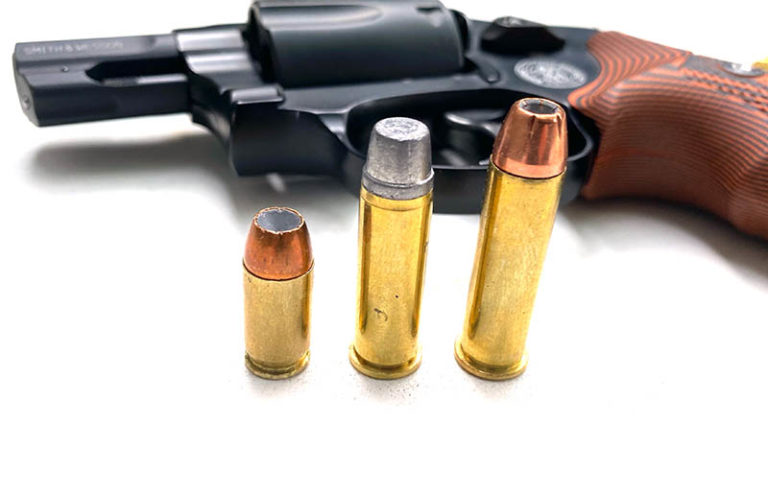
How to select the proper ammo for a defensive pocket gun.
Things tend to get a bit spooky when we start talking about tiny carry guns and their performance, but small carry guns are all the rage today. Unlike full-size pistols, micro-compact guns haven’t only had to overcome the ballistic deficiencies of short barrels, but they also had to compensate for poor handling and subpar cartridges for their assigned role.
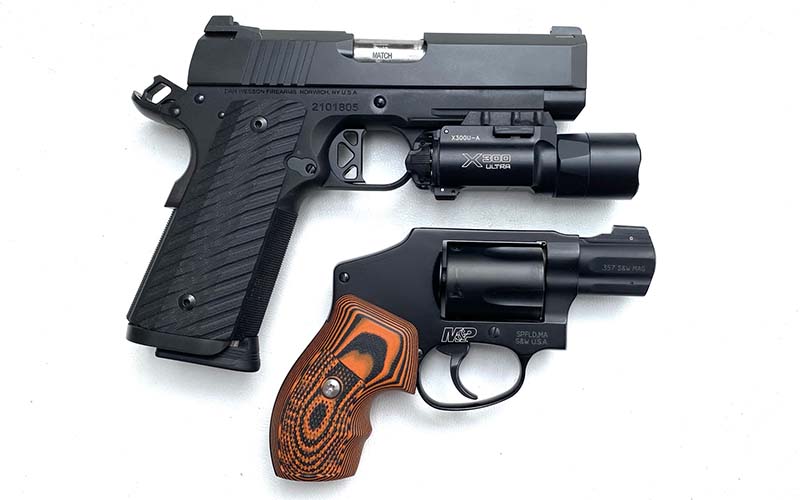
The old days saw guns having to resort to shortcomings to appeal to their buyers. Most were small versions of existing designs, while others were original creations often centered around an established cartridge. The former here usually resulted in funny-looking sawn-off pistols, and the latter in guns questionably suited for their ammunition. At the base of this problem was reliability—something that small guns usually lacked.
The original means to ensure reliable performance was to go simple, such as in the case of the small-frame revolver. For most of the 20th century, the little five-shot was the standard for performance and reliability, most notably the Smith & Wesson J-Frame. This revolver and its variants were the basis of most concealable guns, and the .38 Special and .357 Magnum were the most common cartridges for them.
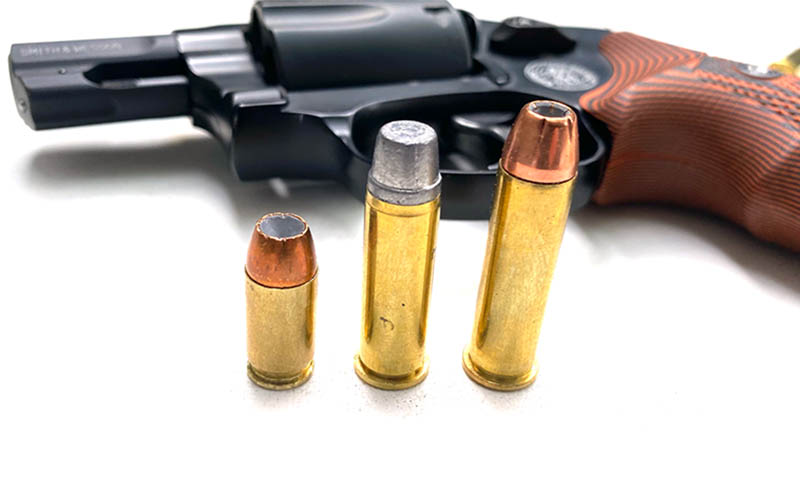
It wasn’t until advances in engineering came along, mostly in the form of polymer components, that small semi-autos began to become truly reliable off the shelf. Newer materials also meant lighter weight and lower cost across the board. There was a significant period in the early 2000s where there was great overlap in the use of revolvers and semi-autos for carry. This was the time when new ammunition was coming out that greatly benefited small calibers like .380 ACP, a cartridge that greatly enjoyed its newfound fame.
Bear in mind that the micro semi-auto has been with us as a mainstream product category for only a decade, whereas the modern micro revolver has been around for more than a century. The rush to make sales with these micro semis saw widespread confusion and complaints of poor performance. I remember clearly how many .380s hit the shelves when they first became popular, and I couldn’t understand who would want a S&W Bodyguard over the company’s own 642 in .38 SPL +P.
Right as this new ammunition was hitting the market, companies like Sig Sauer introduced the P238 in .380 ACP (2009) and the P938 in 9x19mm (2011). These were successful designs, and I own two of them. My basic P238 is a workhorse, but the upgraded version struggles with reliability. I don’t carry it; I just keep it for sentimental value as a project gun. I’ve heard a great deal of similar stories with the P238 and P938; some people swear by them, and others swear at them.
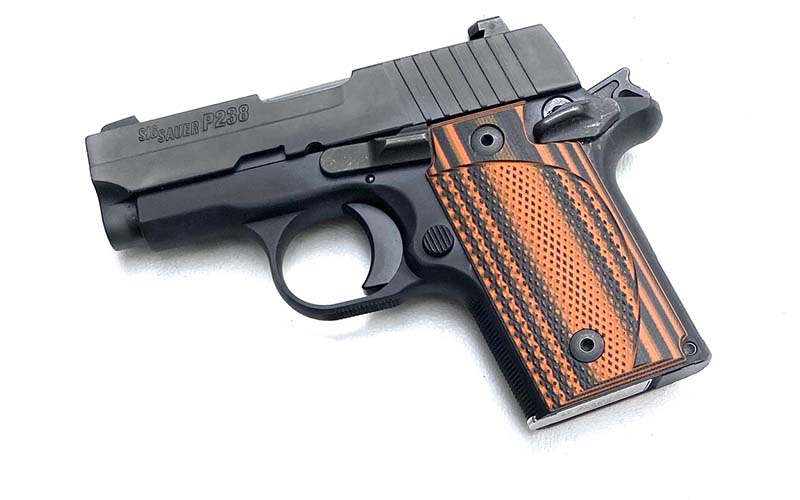
I’ve found these mini 1911 types can be extremely picky with ammunition. I carry only Buffalo Bore .380 +P in mine to ensure I get full cycling of the slide. I like the P238, but I realize that there are better options out there, as even I’ve resorted to hand-picking ammo I’ve had the least number of issues with. I firmly believe that your self-defense pistol should be as close to 100 percent reliable as possible, or at least not prone to failure with something as benign as ammo choice.
This is really where the micro pistol world revolves—the balance of ammunition to the size of the gun. Let’s take a look at this in greater detail with the most popular carry calibers…and just what they do in a small gun.
The .357 Magnum
The .357 Mag. is something of a holy grail carry cartridge in a 4-inch revolver. It can do just about anything you want, but the same cartridge in a 2-inch snubby isn’t fun in the slightest, and it doesn’t come close to what a 4-inch gun can do. It’s true, in general, that you’re getting more power and speed out of a 2-inch .357 compared to the other calibers and guns on this list. The old advice of “carry .357s but practice with .38s” is bad advice because there’s a world of hurt between the two cartridges, and I think that it’s best to forgo the full-house .357 in a 2-inch gun.

In all my testing, nothing I can find as a benefit of the full-house .357 outweighs the cons. Most .38 +P ammo is completely sufficient and very powerful itself. I personally carry .38s in my .357; Buffalo Bore 158-grain hardcast .38 +P is plenty in a 13-ounce revolver. This is probably the most deceptive carry caliber out there: People buy it and then realize they’ve been tricked when they fire it for the first time. Ouch!
The .38 Special
Up until 9mm became popular in small guns, the .38 Special was truly America’s carry cartridge. It has a long and storied history and has earned its reputation. For a carry revolver today, this is the best carry cartridge, especially with some of the more powerful +P loads from companies like Buffalo Bore. The old “FBI Load” is still perfect for carry and is ample in power.
This cartridge has never really lost relevance; I carry it regularly, and it’s very convenient and easy to handle. The .38 snub-nose is classic, common and hard to go wrong with, even in inexperienced hands. This is my recommendation due in large part to the ammunition being well-developed and widely available. It’s hard to find a .38 Special load that doesn’t perform as advertised.
The 9x19mm
The problem I have with 9mm is that it’s so common. Many people take it for granted, and they don’t really spend the time looking for ammunition suitable for the low velocities produced by sub-3-inch barrels. I’ve found that it’s easy to get into a 9mm, but it’s also easy to load it with ammo that isn’t really suitable for how small the guns are.

Take the Sig P365 as an example. With a factory-length barrel, it needs ammo designed for speeds at or around 1,000 fps. Put in a longer barrel, like the colorful Faxon with suppressor threads, and you end up picking up an easy 150 fps with most ammo. I find that most 9mm ammo marketed to small guns does well in them but is subpar in larger pistols—and vice versa. A 147-grain JHP+P is largely wasted in a P365 or G43, and also that a 115-grain low-recoil carry round is wasted in a 4- to 5-inch pistol.
The .380 ACP
The .380 ACP bothers me fundamentally. It’s true that this round has done so much for carry guns; the technology used to improve it has widely benefited all handgun ammo and, to a lesser degree subsonic, rifle ammo. What gets me is that it’s almost universally loaded far below where it needs to be pressure wise, and performance lacks as a result.

I carry a .380 ACP, but with the most powerful ammo available for it off the shelf. I really believe that the .380 90-grain JHP needs 200 fps over what most are loaded at to ensure reliable function in micro pistols. Virtually all the issues I have in .380 ACP pistols is ammo related, and not design problems in the guns. Like magic, the feeding issues go away when I introduce higher pressure cartridges.
A function of this low-power .380 ammo is that many of the guns chambered for it don’t cycle it well; and this usually boils down to the recoil spring and weight of the slide. When you’re playing with so little mass, the inertia needed to strip a fresh cartridge off the magazine may or may not be there, causing a failure.
It’s no coincidence that, when I load Buffalo Bore .380 +P into a problem pocket gun, it suddenly wakes up and runs like a sewing machine. My recommendation is to get as much horsepower as you can out of the little round. There isn’t much of a difference in recoil moving to a full-power .380, but you’ll absolutely notice the improvement in performance.
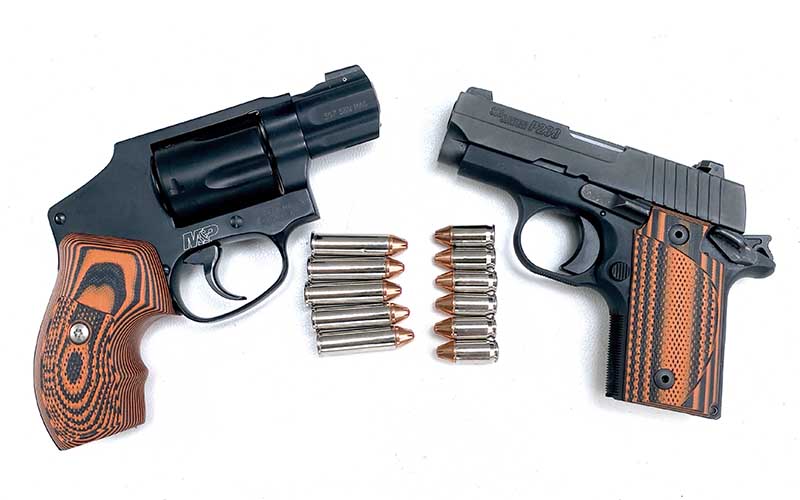
Silver Bullets
Most people who carry a gun do so not out of mortal dread, but out of a desire for peace of mind. Unfortunately, many first-time gun owners never go to the range and practice, instead buying a few boxes of carry ammo, loading the gun and forgetting about it. A lucky charm, if you will.
If you plan to become proficient with your pocket gun, make sure it’s fed a diet of properly suited ammunition. Today, we’re in new territory in that the .38 SPL is still fine with a soft-cast 158-grain hollow point. It works just as well now as it did 100 years ago…but can you say the same for a brand-new .380 with today’s ammo?
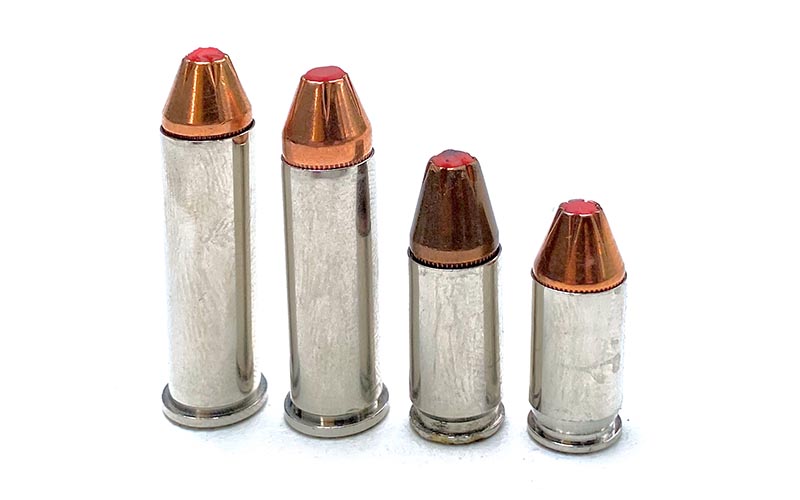
We’re living in a time where we’re actively learning and making advances, and some of these happen on the fly. There’s no silver bullet—no magic cartridge—that’ll make your pocket gun into a showstopper. Match your gun and ammo and don’t try to push it.
Editor's Note: This article originally appeared in the October 2021 issue of Gun Digest the Magazine.
More Pocket Gun Info:
- Pocket Pistol Buyer's Guide
- The Ruger LCP MAX New Pocket Pistol
- The Bond Arms PT2A Derringer
- Eleven Options For Pocket Holsters
- Pocket Shotguns And Hand Cannons

Next Step: Get your FREE Printable Target Pack
Enhance your shooting precision with our 62 MOA Targets, perfect for rifles and handguns. Crafted in collaboration with Storm Tactical for accuracy and versatility.
Subscribe to the Gun Digest email newsletter and get your downloadable target pack sent straight to your inbox. Stay updated with the latest firearms info in the industry.

![Best Concealed Carry Guns In 2025 [Field Tested] Wilson Combat EDC X9S 1](https://gundigest.com/wp-content/uploads/Wilson-Combat-EDC-X9S-1-324x160.jpg)


![Best 9mm Carbine: Affordable PCCs [Tested] Ruger Carbine Shooting](https://gundigest.com/wp-content/uploads/Ruger-Carbine-Shooting-100x70.jpg)
![Best AR-15: Top Options Available Today [Field Tested] Harrington and Richardson PSA XM177E2 feature](https://gundigest.com/wp-content/uploads/Harrington-and-Richardson-PSA-XM177E2-feature-100x70.jpg)

you are responsible for every round that you fire. hard cast hi power rounds may go THROUGH your “target” and into an innocent bystander. so I would recommend hollow points.